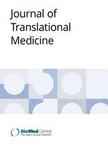版权所有:内蒙古大学图书馆 技术提供:维普资讯• 智图
内蒙古自治区呼和浩特市赛罕区大学西街235号 邮编: 010021

作者机构:Southwest Med Univ Affiliated Tradit Chinese Med Hosp Dept Joint Surg Luzhou Sichuan Peoples R China Southwest Univ Southwest Univ Hosp Sch Mat & Energy Chongqing Peoples R China
出 版 物:《JOURNAL OF TRANSLATIONAL MEDICINE》 (J. Transl. Med.)
年 卷 期:2025年第23卷第1期
页 面:1-19页
核心收录:
学科分类:1001[医学-基础医学(可授医学、理学学位)] 10[医学]
基 金:Supported by Sichuan Science and Technology Program
主 题:Tendon-bone healing Exosomes Bone marrow mesenchymal stem cells Rotator cuff regenerative Drug delivery Nanocarriers Biomaterials Nanomedicine
摘 要:Rotator cuff injury (RCI), characterized by shoulder pain and restricted mobility, represents a subset of tendon-bone insertion injuries (TBI). In the majority of cases, surgical reconstruction of the affected tendons or ligaments is required to address the damage. However, numerous clinical failures have underscored the suboptimal outcomes associated with such procedures. Further investigations have revealed that these failures are largely attributable to delayed healing at the tendon-bone interface, excessive formation of vascularized scar tissue, and inadequate integration of tendon grafts within bone tunnels. As a result, the healing process of rotator cuff injuries faces significant *** marrow-derived mesenchymal stem cell exosomes (BMSC-exos) have emerged as a prominent focus of research within the field of bioengineering, owing to their remarkable potential to regulate cellular proliferation and differentiation, modulate immune responses, and facilitate tissue repair and regeneration following cellular damage. In this review, we explore the anti-inflammatory, angiogenic, anti-scarring, and bone metabolism-modulating effects of BMSC-exos in the context of rotator cuff injury. Additionally, we address the limitations and ongoing challenges within current research, offering insights that could guide the clinical application of BMSC-exos in the treatment of rotator cuff injuries in the future.